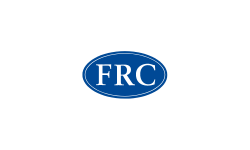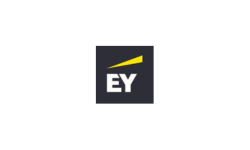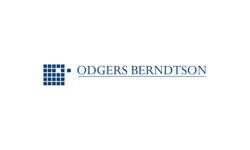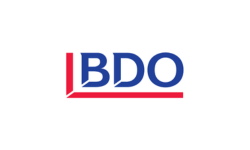Collective intelligence in the boardroom and beyond

Jennifer Sundberg is the founder and co-CEO of Board Intelligence, which supports over 3,000 organisations to drive performance and high-impact governance through board and management reporting. She has played a vocal role in shaping governance best practice and is the co-author of ‘Collective Intelligence: How to build a business that’s smarter than you’. jennifer.sundberg@boardintelligence.com

Megan Pantelides is Executive Director, Research at Board Intelligence. She has worked closely with boards and leadership teams for over 15 years, advising on corporate strategy, board effectiveness, and executive performance. megan.pantelides@boardintelligence.com | www.boardintelligence.com
Jennifer Sundberg and Megan Pantelides argue that we need great thinking at every level of any organisation. In this article they share what they’ve learned from working with boards and leadership teams over the past 15 years and offer a framework for building teams that think harder so they can act smarter and faster.
A few months ago, the former Smiths Group Chair and 3M chief executive Sir George Buckley floored us with a simple question. ‘The core of every business is dying, yours included. What are you doing about it?’ he asked.
Sir George had cut right to the heart of what keeps so many of us awake at night. PwC’s most recent CEO survey revealed that 45% of CEOs believe their company will not be viable in ten years if it stays on its current path. And only a third of CEOs are prioritising their core business in their growth plans, according to a 2023 survey by Arthur D. Little.
We all know that the status quo is a path to nowhere. What’s hard is surfacing the insights and ideas that will help us find a new path. To do that, we need great thinking at every level of our organisation. Because the businesses that thrive in the long run are those that get everyone’s brains firing, harnessing their collective intelligence to unlock new horizons.
How do you find the new path?
Building this capability is the smartest thing a leader can do. Indeed, it’s what the leaders of many enduringly successful businesses have done, from Jeff Bezos to Sir John Timpson. Look beyond the celebrity CEOs and you’ll find organisations in which everyone is equipped with the tools, skills, and confidence to use their brains and apply them where it matters most.
Take Amazon, for example. Deep and detailed thinking has long underpinned the e-commerce giant’s ability to innovate and execute at pace. ‘At Amazon we spend a lot of time writing documents, because it helps you think things through and gives others confidence that you’ve done so’, a former colleague and current Amazonian told us. ‘That builds trust, which helps us move quickly – you don’t have to go up the chain on every decision. Deep thinking is a hugely important part of Amazon’s entrepreneurialism.’
You see something similar at Timpson, where ‘upsidedown management’ has been key to building an enduringly successful business. As Sir John Timpson once put it to us: ‘I don’t like being told what to do, so there’s no reason why anyone else should. Our store staff understand our customers the best, so we’ve put them in charge. Management is there to support and empower our staff and this rolls up to the board.’
Organisations like these are designed to get everyone thinking rigorously and consistently, so that decisions can be made with greater speed and closer to the front line. By making use of everyone’s minds, they avoid creating bottlenecks and produce better thinking overall.
So how do you build an organisation that’s fuelled by collective rather than individual intelligence? Our view, having studied this for the past 15 years, is that it boils down to building three capabilities at every level: critical thinking, great communication, and a shared focus on what matters most.
How do you get everyone thinking?
The first step is to get everyone asking more and better questions. Questions fuel our critical thinking and creativity, but while we all start off as prodigious questioners, we ask fewer questions as we grow up. The good news is we can relearn this skill, by making it a habit to ask the simple yet powerful questions that we so often overlook, like ‘Why?’, ‘So what?’ and ‘Now what?’.
Our routines are full of opportunities to make asking questions like these a part of people’s day-to-day working lives. They’re the rituals that every business is run on, like quarterly business reviews and board meetings.
You can embed questions into these activities in a few different ways. You can use questions as the headings within your preread or report, or as the agenda items for the meeting. This way, the questions shape the thinking that needs to be done before, during, and after the ritual.
You can also package questions up into ‘set plays’ – preloaded sets of questions for common rituals. They help people to get into the habit of structuring their thinking around the right questions before diving into the detail.
Versions of these ‘set plays’, which we call ‘Question Driven Insight plays’ (‘QDI plays’ for short), have been used everywhere from the British Army to mining companies and banks. You might use one like this for a performance review, for example:
- What are we trying to achieve?
- What’s gone well and what has not?
- What are the key risks and opportunities?
- Given all of this, what should we stop doing, start doing, or do differently?
When you charge your routine activities with set plays, asking the right questions quickly becomes a habit – and the activities themselves become more valuable to everyone involved.
How do you make sure good thinking travels?
To convert your great thinking into action, you need to get your colleagues on board with it by expressing yourself with clarity and impact. But that’s rare, even at the highest levels of business – as we’ve seen from the thousands of board and management reports we’ve reviewed.
The problem is that most of us learn bad communication habits disguised as best practice from an early age. For example:
- Using slick slide decks to share insights and ideas. Slides shouldn’t be your default. Narrative reports can be a better way to crystallise your thinking and get others to back it.
- Sharing the takeaways at the end. No, to land your message the bottom line should come first.
- Using ‘clever’, complex, technical language. Short, simple words and sentences are easier to read and make a better impression.
You can't get people to adopt good communication habits through training, style guides or simply telling them to do it. You need to make it difficult for them not to do it well. Technology, and particularly AI with its immense capabilities to analyse text, can play a major role here. Rather than doing the thinking for you, it can help your thinking to shine by providing the nudges and guide rails that help you express yourself more clearly.
How do you focus good thinking on the right things?
Focus is essential for any business, but it can quickly turn into tunnel vision.
The best way to set, or shift, a team’s focus is to change the questions you’re asking them. After all, as the saying goes, ‘He (or she) who asks the questions, controls the conversation’.
For example, if you were asking ‘How can we cut costs?’ and now you want to ask ‘How can we delight our customers?’, put that question into your QDI plays. This makes it a priority for managers, who then make it a priority for their teams and so on.
Dame Carolyn McCall did just this at easyJet, making ‘people’ the airline’s top priority by cascading a simple question (‘How do our people feel, and what can we do to better support and enable them?’) through the company’s board papers, KPI dashboards and management decks. Team, customer and shareholder satisfaction were transformed, because she got everyone thinking about the right things.
Marc Benioff takes a similar approach with Salesforce’s ‘V2MOM’ documents, which cascade the company’s priorities through the business. Every year, each team asks itself five questions – Salesforce’s version of a QDI play – to understand where they are going and how they are going to get there:
- Vision – what do you want to achieve?
- Values – what’s important to you?
- Methods – how will you achieve it?
- Obstacles – what could get in the way?
- Measures – how will you know you’ve succeeded?
‘What I like about the V2MOM is that it encourages creativity, change, and empowerment,’ Benioff wrote in 2020.
Whose job is it, anyway?
At its heart, collective intelligence is about running a business well. In other words, it’s about good governance. And that sits squarely within your remit.
It transforms governance forums from frustrating bottlenecks into drivers of performance that enable transformation and innovation.
But it also ensures governance can be a force for good, by injecting robust questioning, deep thinking, and healthy challenge into corporate cultures and ways of working. When we routinely ask more and better questions, we’re forced to confront uncomfortable truths and acknowledge inconvenient risks. We see challenge not as confrontation but as an opportunity to sharpen our thinking. And it becomes hard to ignore the ripple effects of our decisions, making it more likely that we’ll think before acting, and therefore act in everyone’s interests









